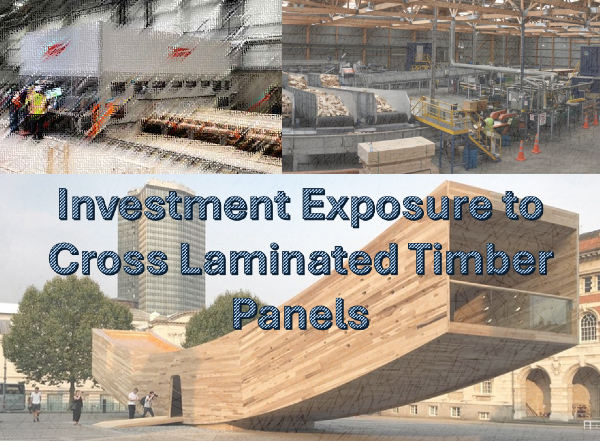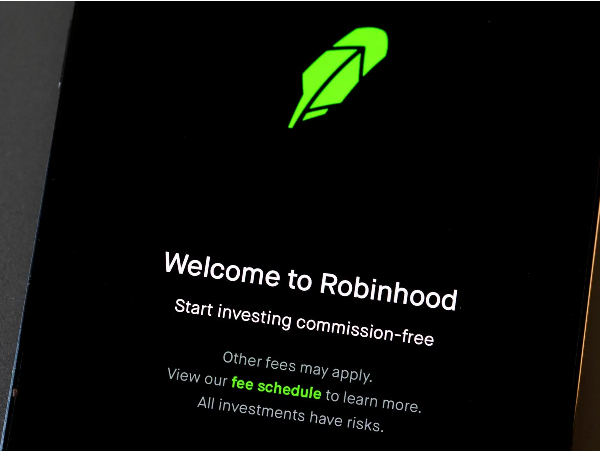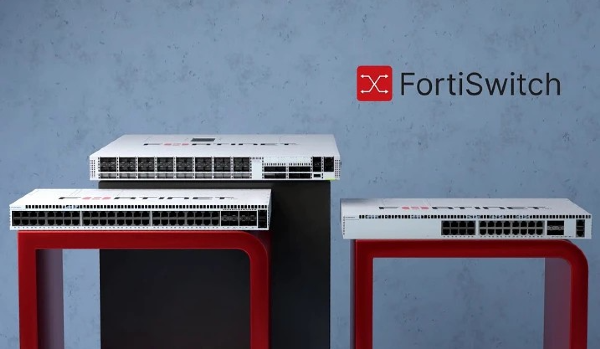Key Takeaways
If you want to invest in companies that produce CLT, those U.S. manufacturers are listed below:
| Company |
Ticker Symbol |
Market Cap (Approx.) |
CLT Production & Role |
| Weyerhaeuser Company |
WY |
~$20B |
One of the largest timberland owners, produces engineered wood including CLT, supports sustainable forestry. |
| Boise Cascade Company |
BCC |
~$3B |
Manufactures engineered wood products, including structural panels, distributes CLT through its extensive network. |
| Louisiana-Pacific Corporation |
LPX |
~$6B |
Produces engineered wood products, invests in sustainable materials, has potential for CLT expansion. |
Cross-laminated timber (CLT) is a revolutionary engineered wood product that is transforming the construction industry. Made by layering timber panels in alternating directions, CLT offers superior strength, durability, and sustainability compared to traditional building materials like concrete and steel. Its lightweight nature and ease of assembly make it an attractive option for residential, commercial, and infrastructure projects. Additionally, CLT contributes to carbon reduction by sequestering CO₂, making it a key component in sustainable construction efforts.
Investors are increasingly looking at publicly traded CLT manufacturers as the demand for eco-friendly building materials grows. Companies producing CLT benefit from government incentives, sustainability mandates, and the rising adoption of mass timber in large-scale projects. Publicly traded firms provide transparency in financial performance, allowing investors to assess profitability, market positioning, and long-term growth potential. As CLT continues to gain traction, these manufacturers play a crucial role in shaping the future of sustainable construction.
Understanding Cross-Laminated Timber (CLT)
Cross-laminated timber (CLT) is an engineered wood product made by stacking layers of lumber perpendicular to each other and bonding them with adhesives under high pressure. This crosswise arrangement enhances the structural integrity of the material, making it comparable to traditional construction materials like steel and concrete. CLT panels typically consist of three, five, or seven layers of solid wood, offering exceptional strength and stability. The manufacturing process involves careful wood selection, drying, lamination, pressing, and finishing, ensuring durability and consistency in each panel.
One of the primary advantages of CLT is its sustainability. Unlike concrete and steel, which have high carbon footprints, CLT is made from renewable timber and actively sequesters carbon dioxide. Additionally, CLT panels are prefabricated, reducing construction waste and improving efficiency on job sites. The material also provides excellent thermal insulation, lowering energy consumption in buildings. Its lightweight nature simplifies transportation and installation, making it a cost-effective alternative for large-scale projects in Construction.
CLT is widely used in residential, commercial, and infrastructure construction. In homes, it serves as a durable option for flooring, walls, and roofing. In commercial buildings, CLT enables faster assembly and supports multi-story structures with its high load-bearing capacity. Infrastructure projects, such as bridges and decking, benefit from CLT’s strength and resilience. Its earthquake-resistant properties make it a preferred choice in regions prone to seismic activity, further solidifying its role in modern construction.
Market Overview of CLT in the U.S.
The cross-laminated timber (CLT) market in the U.S. is experiencing significant growth, driven by increasing demand for sustainable building materials. In 2024, the global CLT market was valued at approximately $684.72 million and is projected to reach $1.19 billion by 2030, with a compound annual growth rate (CAGR) of 9.7%. This expansion is fueled by the rising adoption of mass timber in construction, particularly in multi-story buildings and modular projects. As developers and architects seek eco-friendly alternatives to concrete and steel, CLT is emerging as a preferred choice due to its strength, efficiency, and environmental benefits.
Several key factors are driving demand for CLT in the U.S. Sustainability initiatives play a major role, as CLT reduces carbon emissions and supports green building certifications. Government incentives, such as tax benefits and subsidies for sustainable construction, further encourage adoption Market. Additionally, CLT's prefabrication process enhances construction efficiency by reducing waste and shortening project timelines. Technological advancements, including improved adhesives and production techniques, are also contributing to the material’s growing popularity in commercial and residential applications.
Despite its promising outlook, the CLT market faces challenges that could impact growth. Supply chain disruptions, including timber shortages and transportation constraints, pose risks to production and pricing. Regulatory hurdles, such as building code restrictions and fire safety concerns, also limit widespread adoption in certain regions. Addressing these challenges through policy adjustments and industry collaboration will be crucial for sustaining the momentum of CLT in the U.S. construction sector.
Publicly Traded CLT Manufacturers in the U.S.
The cross-laminated timber (CLT) industry in the U.S. is gaining momentum as sustainable construction practices become more prevalent. Several publicly traded companies are leading the charge in CLT production, offering investors opportunities to capitalize on the growing demand for eco-friendly building materials. Among these, Weyerhaeuser Company (WY), Boise Cascade Company (BCC), and Louisiana-Pacific Corporation (LPX) stand out as key players in the engineered wood sector. Each company has a unique market presence, financial performance, and sustainability initiatives that contribute to the expansion of CLT in modern construction.
Weyerhaeuser Company, founded in 1900, is one of the largest timberland owners and wood product manufacturers in North America. The company manages millions of acres of forestland and produces a variety of engineered wood products, including CLT. While Weyerhaeuser is not exclusively focused on CLT, its extensive resources and commitment to sustainable forestry make it a significant player in the mass timber industry. The company’s CLT production supports the growing demand for prefabricated, high-strength wood panels used in commercial and residential construction.
Financially, Weyerhaeuser has demonstrated resilience in the timber market, with steady revenue growth driven by increasing demand for sustainable building materials. The company’s stock (NYSE: WY) has remained a strong investment option due to its diversified portfolio and long-term sustainability initiatives. Weyerhaeuser continues to invest in responsible forestry practices, carbon sequestration, and innovative wood products, positioning itself as a leader in the transition toward greener construction solutions.
Boise Cascade Company, established in 1957, is a leading manufacturer and distributor of engineered wood products, including laminated veneer lumber (LVL) and I-joists. While CLT is not its primary focus, Boise Cascade plays a crucial role in the mass timber industry through its production of high-quality structural wood components. The company’s extensive distribution network ensures that CLT and other engineered wood products reach a broad customer base across North America.
Boise Cascade’s stock (NYSE: BCC) has shown strong performance, supported by consistent revenue growth and strategic acquisitions in the building materials sector. The company’s commitment to sustainability is evident in its responsible sourcing practices and efforts to reduce environmental impact. As demand for CLT continues to rise, Boise Cascade is well-positioned to expand its presence in the engineered wood market, offering investors a stable and growth-oriented opportunity.
Louisiana-Pacific Corporation (LPX) is a major player in the engineered wood industry, specializing in oriented strand board (OSB), laminated strand lumber (LSL), and other structural wood products. While LPX has not fully transitioned into large-scale CLT production, its expertise in engineered wood manufacturing makes it a potential contender in the mass timber market. The company’s focus on innovation and efficiency aligns with the growing adoption of CLT in sustainable construction.
LPX’s stock (NYSE: LPX) has performed well, benefiting from strong demand for engineered wood products and strategic investments in manufacturing technology. The company prioritizes sustainability through responsible forestry management, energy-efficient production processes, and reduced carbon emissions. As CLT gains traction in the U.S., LPX’s experience in engineered wood manufacturing positions it as a potential leader in future mass timber developments.
Other Notable CLT Manufacturers (Potential Future Public Listings)
Several privately held cross-laminated timber (CLT) manufacturers in the U.S. are gaining traction as demand for sustainable construction materials rises. These companies are expanding production capacity, forming strategic partnerships, and positioning themselves for potential public offerings. As the CLT market continues to grow, investors are closely watching firms that could enter the stock market, offering new opportunities in the mass timber sector. Companies such as SmartLam North America and Structurlam are among the most notable players with strong market positioning and expansion strategies.
SmartLam North America is a leading CLT manufacturer with facilities in Montana and Alabama. The company specializes in producing high-quality CLT panels for commercial and residential construction, focusing on sustainability and efficiency. SmartLam has secured contracts for large-scale projects, reinforcing its reputation as a key supplier in the industry. Structurlam, another major CLT producer, operates in Canada and the U.S., supplying mass timber products for high-rise buildings and infrastructure projects. Structurlam’s innovative approach to engineered wood solutions has positioned it as a potential candidate for future public listing.
The market positioning of these companies reflects the increasing adoption of CLT in construction. As sustainability regulations tighten and developers seek eco-friendly alternatives, firms like SmartLam and Structurlam are well-positioned to capitalize on industry growth. A potential IPO from either company could attract investors looking to gain exposure to the expanding mass timber market. With advancements in CLT technology and rising demand for prefabricated wood solutions, these manufacturers are set to play a crucial role in shaping the future of sustainable construction.
Investment Considerations for CLT Stocks
Investing in cross-laminated timber (CLT) stocks requires evaluating key financial metrics to determine profitability and growth potential. Investors should analyze revenue trends, profit margins, and return on equity (ROE) to assess a company’s financial health. Additionally, examining debt-to-equity ratios and cash flow stability provides insight into a firm’s ability to sustain operations and expand production. Companies with strong distribution networks and strategic partnerships tend to have a competitive advantage in the growing CLT market.
While CLT investments present significant opportunities, they also come with risks. Supply chain disruptions, including timber shortages and transportation constraints, can impact production costs and profitability. Regulatory challenges, such as building code restrictions and fire safety concerns, may slow adoption in certain regions. However, the increasing demand for sustainable construction materials and government incentives supporting mass timber projects create favorable conditions for long-term growth. Investors should weigh these risks against the potential for CLT to become a mainstream building material.
The long-term growth potential of CLT in sustainable construction is promising. As developers and architects prioritize eco-friendly materials, CLT adoption is expected to rise. Market forecasts indicate that the CLT industry will experience steady expansion, driven by advancements in manufacturing technology and increased awareness of its environmental benefits. Companies investing in research and development to improve CLT’s durability and fire resistance will likely gain a competitive edge, making them attractive investment options.
Future Outlook of CLT in the U.S.
Emerging trends in CLT adoption suggest a shift toward mass timber construction in commercial and residential projects. Developers are increasingly using CLT for multi-story buildings due to its strength, efficiency, and sustainability. Prefabrication techniques are also gaining traction, allowing for faster assembly and reduced labor costs. As urban areas seek carbon-neutral solutions, CLT is positioned as a viable alternative to traditional materials like concrete and steel.
Technological advancements in CLT manufacturing are enhancing product quality and expanding its applications. Innovations in adhesive bonding and lamination techniques improve structural integrity, making CLT more suitable for high-rise construction. Robotics and automated cutting systems are streamlining production, reducing waste, and increasing precision. These advancements contribute to the material’s growing acceptance in large-scale infrastructure projects.
Market expansion predictions indicate that CLT will continue to gain traction in the U.S. construction sector. Analysts forecast a steady increase in CLT production capacity, driven by rising demand and favorable government policies. As sustainability regulations tighten, CLT manufacturers are expected to benefit from increased investment and industry collaboration. The material’s ability to sequester carbon and reduce environmental impact will further solidify its role in future construction trends.
Conclusion
Publicly traded CLT manufacturers such as Weyerhaeuser Company (WY), Boise Cascade Company (BCC), and Louisiana-Pacific Corporation (LPX) are leading the industry’s expansion. These companies leverage their expertise in engineered wood products to meet the growing demand for sustainable construction materials. Their financial performance, market positioning, and commitment to innovation make them attractive investment options.
The investment potential of CLT stocks is supported by favorable market conditions and increasing adoption of mass timber construction. While challenges such as supply chain disruptions and regulatory hurdles exist, the long-term outlook remains positive. Investors seeking exposure to sustainable building materials should consider CLT manufacturers with strong financials and strategic growth plans.
CLT’s role in sustainable construction and stock market opportunities continues to evolve. As technological advancements improve product quality and efficiency, CLT is expected to become a mainstream material in modern architecture. Investors and industry stakeholders should monitor market trends and emerging players to capitalize on the expanding CLT sector.






























Cross-laminated timber (CLT) is a revolutionary engineered wood product that is transforming the construction industry. Made by layering timber panels in alternating directions, CLT offers superior strength, durability, and sustainability compared to traditional building materials like concrete and steel. Its lightweight nature and ease of assembly make it an attractive option for residential, commercial, and infrastructure projects. Additionally, CLT contributes to carbon reduction by sequestering CO₂, making it a key component in sustainable construction efforts.
Investors are increasingly looking at publicly traded CLT manufacturers as the demand for eco-friendly building materials grows. Companies producing CLT benefit from government incentives, sustainability mandates, and the rising adoption of mass timber in large-scale projects. Publicly traded firms provide transparency in financial performance, allowing investors to assess profitability, market positioning, and long-term growth potential. As CLT continues to gain traction, these manufacturers play a crucial role in shaping the future of sustainable construction.
Understanding Cross-Laminated Timber (CLT)
Cross-laminated timber (CLT) is an engineered wood product made by stacking layers of lumber perpendicular to each other and bonding them with adhesives under high pressure. This crosswise arrangement enhances the structural integrity of the material, making it comparable to traditional construction materials like steel and concrete. CLT panels typically consist of three, five, or seven layers of solid wood, offering exceptional strength and stability. The manufacturing process involves careful wood selection, drying, lamination, pressing, and finishing, ensuring durability and consistency in each panel.
One of the primary advantages of CLT is its sustainability. Unlike concrete and steel, which have high carbon footprints, CLT is made from renewable timber and actively sequesters carbon dioxide. Additionally, CLT panels are prefabricated, reducing construction waste and improving efficiency on job sites. The material also provides excellent thermal insulation, lowering energy consumption in buildings. Its lightweight nature simplifies transportation and installation, making it a cost-effective alternative for large-scale projects in Construction.
CLT is widely used in residential, commercial, and infrastructure construction. In homes, it serves as a durable option for flooring, walls, and roofing. In commercial buildings, CLT enables faster assembly and supports multi-story structures with its high load-bearing capacity. Infrastructure projects, such as bridges and decking, benefit from CLT’s strength and resilience. Its earthquake-resistant properties make it a preferred choice in regions prone to seismic activity, further solidifying its role in modern construction.
Market Overview of CLT in the U.S.
The cross-laminated timber (CLT) market in the U.S. is experiencing significant growth, driven by increasing demand for sustainable building materials. In 2024, the global CLT market was valued at approximately $684.72 million and is projected to reach $1.19 billion by 2030, with a compound annual growth rate (CAGR) of 9.7%. This expansion is fueled by the rising adoption of mass timber in construction, particularly in multi-story buildings and modular projects. As developers and architects seek eco-friendly alternatives to concrete and steel, CLT is emerging as a preferred choice due to its strength, efficiency, and environmental benefits.
Several key factors are driving demand for CLT in the U.S. Sustainability initiatives play a major role, as CLT reduces carbon emissions and supports green building certifications. Government incentives, such as tax benefits and subsidies for sustainable construction, further encourage adoption Market. Additionally, CLT's prefabrication process enhances construction efficiency by reducing waste and shortening project timelines. Technological advancements, including improved adhesives and production techniques, are also contributing to the material’s growing popularity in commercial and residential applications.
Despite its promising outlook, the CLT market faces challenges that could impact growth. Supply chain disruptions, including timber shortages and transportation constraints, pose risks to production and pricing. Regulatory hurdles, such as building code restrictions and fire safety concerns, also limit widespread adoption in certain regions. Addressing these challenges through policy adjustments and industry collaboration will be crucial for sustaining the momentum of CLT in the U.S. construction sector.
Publicly Traded CLT Manufacturers in the U.S.
The cross-laminated timber (CLT) industry in the U.S. is gaining momentum as sustainable construction practices become more prevalent. Several publicly traded companies are leading the charge in CLT production, offering investors opportunities to capitalize on the growing demand for eco-friendly building materials. Among these, Weyerhaeuser Company (WY), Boise Cascade Company (BCC), and Louisiana-Pacific Corporation (LPX) stand out as key players in the engineered wood sector. Each company has a unique market presence, financial performance, and sustainability initiatives that contribute to the expansion of CLT in modern construction.
Weyerhaeuser Company (WY)
Weyerhaeuser Company, founded in 1900, is one of the largest timberland owners and wood product manufacturers in North America. The company manages millions of acres of forestland and produces a variety of engineered wood products, including CLT. While Weyerhaeuser is not exclusively focused on CLT, its extensive resources and commitment to sustainable forestry make it a significant player in the mass timber industry. The company’s CLT production supports the growing demand for prefabricated, high-strength wood panels used in commercial and residential construction.
Financially, Weyerhaeuser has demonstrated resilience in the timber market, with steady revenue growth driven by increasing demand for sustainable building materials. The company’s stock (NYSE: WY) has remained a strong investment option due to its diversified portfolio and long-term sustainability initiatives. Weyerhaeuser continues to invest in responsible forestry practices, carbon sequestration, and innovative wood products, positioning itself as a leader in the transition toward greener construction solutions.
Boise Cascade Company (BCC)
Boise Cascade Company, established in 1957, is a leading manufacturer and distributor of engineered wood products, including laminated veneer lumber (LVL) and I-joists. While CLT is not its primary focus, Boise Cascade plays a crucial role in the mass timber industry through its production of high-quality structural wood components. The company’s extensive distribution network ensures that CLT and other engineered wood products reach a broad customer base across North America.
Boise Cascade’s stock (NYSE: BCC) has shown strong performance, supported by consistent revenue growth and strategic acquisitions in the building materials sector. The company’s commitment to sustainability is evident in its responsible sourcing practices and efforts to reduce environmental impact. As demand for CLT continues to rise, Boise Cascade is well-positioned to expand its presence in the engineered wood market, offering investors a stable and growth-oriented opportunity.
Louisiana-Pacific Corporation (LPX)
Louisiana-Pacific Corporation (LPX) is a major player in the engineered wood industry, specializing in oriented strand board (OSB), laminated strand lumber (LSL), and other structural wood products. While LPX has not fully transitioned into large-scale CLT production, its expertise in engineered wood manufacturing makes it a potential contender in the mass timber market. The company’s focus on innovation and efficiency aligns with the growing adoption of CLT in sustainable construction.
LPX’s stock (NYSE: LPX) has performed well, benefiting from strong demand for engineered wood products and strategic investments in manufacturing technology. The company prioritizes sustainability through responsible forestry management, energy-efficient production processes, and reduced carbon emissions. As CLT gains traction in the U.S., LPX’s experience in engineered wood manufacturing positions it as a potential leader in future mass timber developments.
Other Notable CLT Manufacturers (Potential Future Public Listings)
Several privately held cross-laminated timber (CLT) manufacturers in the U.S. are gaining traction as demand for sustainable construction materials rises. These companies are expanding production capacity, forming strategic partnerships, and positioning themselves for potential public offerings. As the CLT market continues to grow, investors are closely watching firms that could enter the stock market, offering new opportunities in the mass timber sector. Companies such as SmartLam North America and Structurlam are among the most notable players with strong market positioning and expansion strategies.
SmartLam North America is a leading CLT manufacturer with facilities in Montana and Alabama. The company specializes in producing high-quality CLT panels for commercial and residential construction, focusing on sustainability and efficiency. SmartLam has secured contracts for large-scale projects, reinforcing its reputation as a key supplier in the industry. Structurlam, another major CLT producer, operates in Canada and the U.S., supplying mass timber products for high-rise buildings and infrastructure projects. Structurlam’s innovative approach to engineered wood solutions has positioned it as a potential candidate for future public listing.
The market positioning of these companies reflects the increasing adoption of CLT in construction. As sustainability regulations tighten and developers seek eco-friendly alternatives, firms like SmartLam and Structurlam are well-positioned to capitalize on industry growth. A potential IPO from either company could attract investors looking to gain exposure to the expanding mass timber market. With advancements in CLT technology and rising demand for prefabricated wood solutions, these manufacturers are set to play a crucial role in shaping the future of sustainable construction.
Investment Considerations for CLT Stocks
Investing in cross-laminated timber (CLT) stocks requires evaluating key financial metrics to determine profitability and growth potential. Investors should analyze revenue trends, profit margins, and return on equity (ROE) to assess a company’s financial health. Additionally, examining debt-to-equity ratios and cash flow stability provides insight into a firm’s ability to sustain operations and expand production. Companies with strong distribution networks and strategic partnerships tend to have a competitive advantage in the growing CLT market.
While CLT investments present significant opportunities, they also come with risks. Supply chain disruptions, including timber shortages and transportation constraints, can impact production costs and profitability. Regulatory challenges, such as building code restrictions and fire safety concerns, may slow adoption in certain regions. However, the increasing demand for sustainable construction materials and government incentives supporting mass timber projects create favorable conditions for long-term growth. Investors should weigh these risks against the potential for CLT to become a mainstream building material.
The long-term growth potential of CLT in sustainable construction is promising. As developers and architects prioritize eco-friendly materials, CLT adoption is expected to rise. Market forecasts indicate that the CLT industry will experience steady expansion, driven by advancements in manufacturing technology and increased awareness of its environmental benefits. Companies investing in research and development to improve CLT’s durability and fire resistance will likely gain a competitive edge, making them attractive investment options.
Future Outlook of CLT in the U.S.
Emerging trends in CLT adoption suggest a shift toward mass timber construction in commercial and residential projects. Developers are increasingly using CLT for multi-story buildings due to its strength, efficiency, and sustainability. Prefabrication techniques are also gaining traction, allowing for faster assembly and reduced labor costs. As urban areas seek carbon-neutral solutions, CLT is positioned as a viable alternative to traditional materials like concrete and steel.
Technological advancements in CLT manufacturing are enhancing product quality and expanding its applications. Innovations in adhesive bonding and lamination techniques improve structural integrity, making CLT more suitable for high-rise construction. Robotics and automated cutting systems are streamlining production, reducing waste, and increasing precision. These advancements contribute to the material’s growing acceptance in large-scale infrastructure projects.
Market expansion predictions indicate that CLT will continue to gain traction in the U.S. construction sector. Analysts forecast a steady increase in CLT production capacity, driven by rising demand and favorable government policies. As sustainability regulations tighten, CLT manufacturers are expected to benefit from increased investment and industry collaboration. The material’s ability to sequester carbon and reduce environmental impact will further solidify its role in future construction trends.
Conclusion
Publicly traded CLT manufacturers such as Weyerhaeuser Company (WY), Boise Cascade Company (BCC), and Louisiana-Pacific Corporation (LPX) are leading the industry’s expansion. These companies leverage their expertise in engineered wood products to meet the growing demand for sustainable construction materials. Their financial performance, market positioning, and commitment to innovation make them attractive investment options.
The investment potential of CLT stocks is supported by favorable market conditions and increasing adoption of mass timber construction. While challenges such as supply chain disruptions and regulatory hurdles exist, the long-term outlook remains positive. Investors seeking exposure to sustainable building materials should consider CLT manufacturers with strong financials and strategic growth plans.
CLT’s role in sustainable construction and stock market opportunities continues to evolve. As technological advancements improve product quality and efficiency, CLT is expected to become a mainstream material in modern architecture. Investors and industry stakeholders should monitor market trends and emerging players to capitalize on the expanding CLT sector.